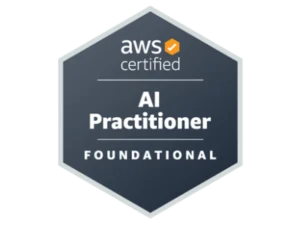Data Science with Python
The Government of India and NASSCOM have endorsed Data Science with Python Certification, proving that it satisfies industry standards. Beginners and experts can benefit from its coverage of basic principles as well as more complex subjects like machine learning, Pandas, and Numpy. Learn about data operations, decision trees, regression, clustering, and object-oriented programming, among other topics. This thorough course will help you advance your career in machine learning and data science.
Overview
The purpose of the Data Science with Python Certification Training is to help you understand the principles of both machine learning and data science. As a data scientist, you will not only understand the importance of machine learning but also become an expert in using it in the context of Python programming. With the use of machine learning techniques, you will be able to easily automate real-world scenarios after taking this course. In addition, later on in the course, we explore a wide range of real-world scenarios in which machine learning combines perfectly with Python to enhance your learning experience.
Who should go for this Python for Data Science course?
- Freshers, Programmers, Developers, Technical Leads, Architects
- Developers aspiring to be a ‘Machine Learning Engineer’
- Analytics Managers who are leading a team of analysts
- Business Analysts who want to understand Machine Learning (ML) Techniques
- Information Architects who want to gain expertise in Predictive Analytics
- Professionals who want to design automatic predictive models
What are the objectives of our Data Science with Python Course?
- Programmatically download and analyze data
- Learn techniques to deal with different types of data – ordinal, categorical, encoding
- Learn data visualization
- Using python notebooks, master the art of presenting step-by-step data analysis
- Gain insight into the ‘Roles’ played by a Machine Learning Engineer
- Describe Machine Learning
- Work with real-time data
- Learn tools and techniques for predictive modeling
- Discuss Machine Learning algorithms and their implementation
- Validate Machine Learning algorithms
- Explain Time Series and its related concepts
- Perform Text Mining and Sentiment analysis
Why should Learn Data Science with Python course?
Python’s code is easy to comprehend and has a hassle-free compilation procedure, which cuts down on development time. This demonstrates the language’s simplicity. Furthermore, Python comes with an inbuilt debugger that makes it easier to find and fix software issues. As a result, Python has become the preferred language for experts working in data analytics.
Our Package
- Overview of Python
- The Companies using Python
- Different Applications where Python is Used
- Discuss Python Scripts on UNIX/Windows
- Values, Types, Variables
- Operands and Expressions
- Conditional Statements
- Loops
- Command Line Arguments
- Writing to the Screen
- What is Data Science?
- What does Data Science involve?
- Era of Data Science
- Business Intelligence vs Data Science
- Life cycle of Data Science
- Tools of Data Science
- Data Analysis Pipeline
- What is Data Extraction?
- Types of Data
- Raw and Processed Data
- Data Wrangling
- Python files I/O Functions
- Numbers
- Strings and related operations
- Tuples and related operations
- Lists and related operations
- Dictionaries and related operations
- Sets and related operations
- Functions
- Function Parameters
- Global Variables
- Variable Scope and Returning Values
- Lambda Functions
- Object Oriented Concepts
- Standard Libraries
- Modules Used in Python
- The Import Statements
- Module Search Path
- Package Installation Ways
- Errors and Exception Handling
- Handling Multiple Exceptions
- Data Analysis
- NumPy – arrays
- Operations on arrays
- Indexing, slicing, and iterating
- Reading and writing arrays on files
- Pandas – data structures & index operations
- Reading and Writing data from Excel/CSV formats into Pandas
- Metadata for imported Datasets
- Matplotlib library
- Grids, axes, plots
- Markers, colors, fonts, and styling
- Types of plots – bar graphs, pie charts, histograms
- Contour plots
- Basic Functionalities of a data object
- Merging of Data objects
- Concatenation of data objects
- Types of Joins on data objects
- Exploring and analyzing datasets
- Analysing a dataset
- What is Machine Learning?
- Machine Learning Use-Cases
- Machine Learning Process Flow
- Machine Learning Categories
- Linear regression
- Gradient descent
- What are Classification and its use cases?
- What is a Decision Tree?
- Algorithm for Decision Tree Induction
- Creating a Perfect Decision Tree
- Confusion Matrix
- What is Random Forest?
- Introduction to Dimensionality
- Why Dimensionality Reduction
- PCA
- Factor Analysis
- Scaling dimensional model
- LDA
- What is Naïve Bayes?
- How Naïve Bayes works?
- Implementing Naïve Bayes Classifier
- What is a Support Vector Machine?
- Illustrate how Support Vector Machine works
- Hyperparameter Optimization
- Grid Search vs. Random Search
- Implementation of Support Vector Machine for Classification
- What is Clustering & its Use Cases?
- What is K-means Clustering?
- How does the K-means algorithm works?
- How to do optimal clustering
- What is C-means Clustering?
- What is Hierarchical Clustering?
- How does Hierarchical Clustering work?
- What are Association Rules?
- Association Rule Parameters
- Calculating Association Rule Parameters
- Recommendation Engines
- How do Recommendation Engines work?
- Collaborative Filtering
- Content-Based Filtering
- What is Reinforcement Learning?
- Why Reinforcement Learning?
- Elements of Reinforcement Learning
- Exploration vs. Exploitation dilemma
- Epsilon Greedy Algorithm
- Markov Decision Process (MDP)
- Q values and V values
- Q – Learning
- Values
- What is Time Series Analysis?
- Importance of TSA
- Components of TSA
- White Noise
- AR model
- MA model
- ARMA model
- ARIMA model
- Stationarity
- ACF & PACF
- What is Model Selection?
- Need for Model Selection
- Cross Validation
- What is Boosting?
- How do Boosting Algorithms work?
- Types of Boosting Algorithms
- Adaptive Boosting
- What is Exploratory Data Analysis?
- EDA Techniques
- EDA Classification
- Univariate Non-graphical EDA
- Univariate Graphical EDA
- Multivariate Non-graphical EDA
- Multivariate Graphical EDA
- Heat Maps
- Basics of database management
- Python MySql
- Create database
- Create a table
- Insert into table
- Select query
- Where clause
- OrderBy clause
- Delete query
- Drop table
- Update query
- Limit clause
- Join and Self-Join
- MongoDB (Unstructured)
- Insert_one query
- Insert_many query
- Update_one query
- Update_many query
- Create index query
- Drop index query
- Delete and drop collections
- Limit query
- Data Visualization
- Business Intelligence tools
- VizQL Technology
- Connect to data from the File
- Connect to data from the Database
- Basic Charts
- Chart Operations
- Combining Data
- Calculations
- Trend lines
- Reference lines
- Forecasting
- Clustering
- Geographic Maps
- Using charts effectively
- Dashboards
- Story Points
- Visual best practices
- Publish to Tableau Online
Upcoming Batch
April 20th (Weekends)
FRI & SAT (4 Weeks)
08:30 PM to 01:00 AM (CDT)
April 18th (Weekdays)
MON – FRI (18 Days)
10:00 AM to 12:00 PM (CDT)








Reviews
There are no reviews yet.